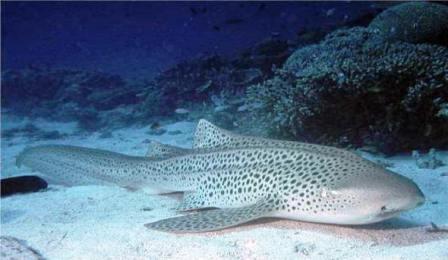Home › Top Places to Scuba Dive › Asia › Thailand › Koh Phi Phi › Hin Bida Rock
Hin Bida Reef Diving and Snorkeling Guide
It's frequently called Phi Phi "Shark Point" because of some similarities with another deeper dive spot that is closer to Phuket.
This guide contains useful information for scuba diving at Hin Bida Reef south east of the famous Phi Phi Islands in Thailand.
What is the Best Season to Dive in Phi Phi?
Koh Phi Phi is an archipelago of six islands in Krabi Province, southern Thailand. The top locations for scuba diving and snorkeling are:
- Koh Phi Phi Don (Thai: พีพีดอน)
- Koh Phi Phi Leh (Thai: พีพีเล)
- Koh Mai Phai (Bamboo Island)
- Koh Yung (Mosquito Island)
- Koh Bida Nok (Thai: เกาะบิดานอก)
- Koh Bida Nai (Thai: เกาะบิดาใน)
They are all first-rate destinations for divers. But, Phi Phi Don is the only inhabited island in the group, and it has a total land mass of twelve (12) square kilometres.
A combination of stunning scenery, pristine white sand beaches, and cobalt blue water has transformed Koh Phi Phi Islands into one of the top landing places for Thailand diving destinations.
Here's the thing:
Koh Phi Phi dive sites get around three hundred days of sunshine per year and the water temperature rarely drops below 29° Celsius (84° Fahrenheit).
As a consequence of that, it's fair to say diving in Phi Phi is an annual activity. But, divers need to be mindful that the southwest monsoons usually arrive towards the end of May and continue through to the end of October.
At certain times of the year, the Andaman Sea can produce thirty (30) metres of underwater visibility. So, the best months for divers to enjoy clear water dives are January, February, and March.
Pro Tip: Check out our sea life section for interesting facts about whale sharks and manta rays that often make an appearance around the islands during the plankton-rich months between June and October.
Marine Species at Hin Bida Rock
A combination of huge rock formations and various types of soft corals create a stunning backdrop for underwater photographers.
If you're wondering where to see leopard sharks near Phi Phi, Hin Bida Reef is one of the better destinations. You should also catch sighting of some rare and awe-inspiring sea creatures, including:
- Banded sea krait (Laticauda colubrina)
 Blacktip reef sharks (Carcharhinus melanopterus)
Blacktip reef sharks (Carcharhinus melanopterus)- Cuttlefish (Sepiidae)
- Eagle rays (Myliobatiformes)
- Fusilier fish (Caesionidae)
- Leopard sharks (Triakis semifasciata)
- Mangrove whipray (Urogymnus granulatus)
- Nudibranchs (sea slugs)
- Octopus (Octopus vulgaris)
- Scorpionfishes (Scorpaenidae)
- Sea anemones (Actiniaria)
- Two-spot banded snapper (Lutjanus biguttatus)
- Zebra moray (Gymnomuraena zebra)
Some of the southern islands have become key breeding grounds for large marine reptiles (e.g. turtles). In fact, there are regular events to reintroduce juvenile turtles back into the vibrant ecosystems and help stimulate the growth of colourful coral reefs.
Tips for Divers at Hin Bida Pinnacle
Hin Bida is a shallow rocky outcrop close to many other dive sites in Phi Phi, especially Koh Maa (an island near Koh Lanta).
Travel southeast of Phi Phi Ley for about eight kilometres and you'll find the rocky landmark breaking the surface.
Some of the main features are the coral bommies and several distinctive rock finger formations, including large boulder pinnacles.
Here's the thing:
Shark fans are regularly rewarded with sightings of leopard sharks resting on the sand, blacktip reef sharks, tuna, jacks, and there's a good chance spotting whale sharks (Rhincodon typus), especially when the plankton blooms - from November through to end of April.
Have a peep inside the cracks and rock crevices and you might even see tiny nudibranch and other macroscopic species.
Maximum Depths and Visibility
This circular rock breaks the surface at low tide, but you actually can dive down to at least twenty (20) metres at some of the deepest sections.
Even though the water currents can be strong at times, you could feel disappointed if you don't experience at least fifteen (15) metres of crystal clear visibility.
Pro Tip: It's always better to study a dive site guide and map before you dive or snorkel at any of the Bidas (Koh Bida Nai, Koh Bida Nok, and Hin Bida Reef).